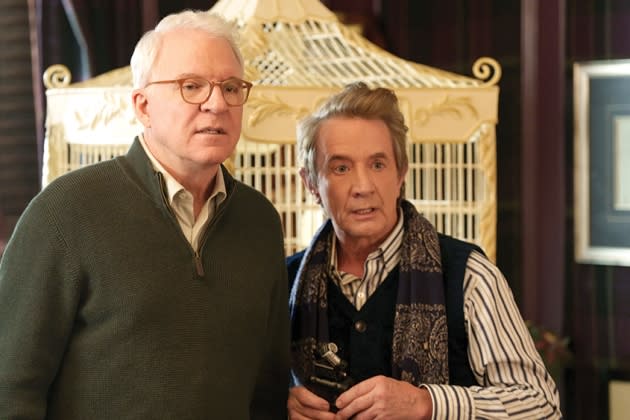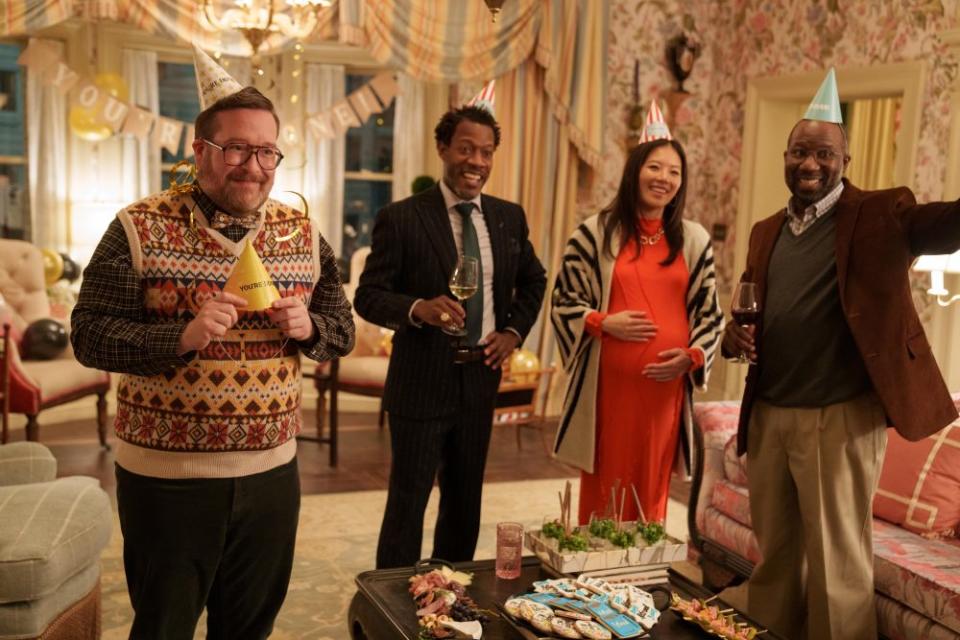‘Only Murders in The Building’: How a Parrot and Artwork Were Used to Illustrate Bunny’s World
- Oops!Something went wrong.Please try again later.
- Oops!Something went wrong.Please try again later.
- Oops!Something went wrong.Please try again later.

The new season of “Only Murders in the Building,” currently streaming on Hulu, sees the trio of amateur sleuths and residents of New York’s Arconia apartments played by Selena Gomez, Martin Short and Steve Martin becoming suspects in a new crime — the killing of Bunny Folger (played by Jayne Houdyshell).
Production designer Patrick Howe was told by show co-creator John Hoffman that Bunny’s apartment would need to be a new set for the season. “It hadn’t even registered that the character was dead. In all my years of designing, I don’t think I’d ever designed for a dead person,” Howe says.
More from Variety
Bunny had been a longtime resident of the Arconia and the president of the building’s co-op, so Howe looked to influences from luxury interior designers Bunny Williams and the late Mario Buatta to create a look of settled affluence.
The bold and lively floral pieces in the character’s apartment, Howe says, were intentionally ironic. “Most people saw her as mean, bitchy and crabby with money. But her environment was warm and inviting because, as we learn, she wasn’t always bitter.”
Howe also aimed for a contemporary and elegant look. The space “might be dated by 15 years, but it was also in good shape,” he says. “We wanted to present her as a New Yorker with style.”
Integral to Bunny’s apartment is Mrs. Gambolini, her overly chatty parrot. Hoffman told Howe that the bird would play a key part. “I created an aviary type space as part of the living room,” says Howe. “I had the idea that the alcove existed within the architecture.”
However, the key production piece this season may well be the portrait that is stolen from Bunny’s apartment — evidence toward finding her killer. Howe commissioned scenic artist Ajamu Kojo to create an original. Then, because the painting was going to be handled so much, he made copies that could be used throughout the season.
Another fun set detail was a secret elevator in the back of Bunny’s closet, which leads out into an alley. He used a black and bronze design that helped root the building in the history of New York.
“The bronze scissor gates that open and close were popular at that time for both passenger and service elevators,” Howe says. “They’re almost extinct at this point, but I wanted that cab to look as opposite as possible to the main elevator cabs — the modern cabs that we see the passengers ride in the Arconia. It explains the vintage era of its origins, the 19th century and the beginnings of elevators.”
Howe had to convey a sense that the cast was traveling up and down in the elevator. “I added some ornamental grilles so we could backlight them as they passed the other floors,” he says. “It’s this closet inside a closet inside a bedroom that is part of a wing off the living room, and it was fun to tell the story with a few seconds of camera time.”
HULU
Best of Variety
Sign up for Variety’s Newsletter. For the latest news, follow us on Facebook, Twitter, and Instagram.


